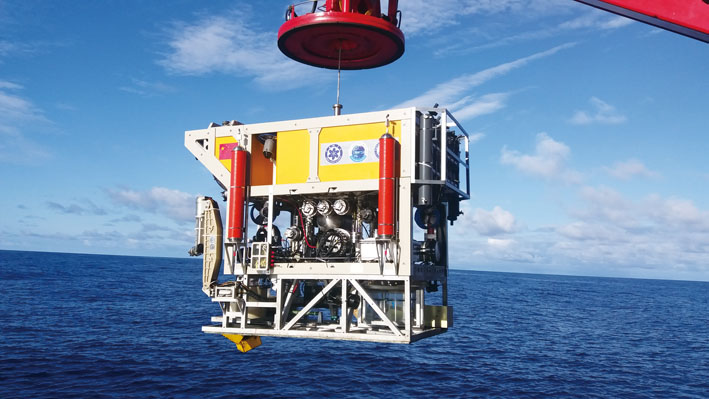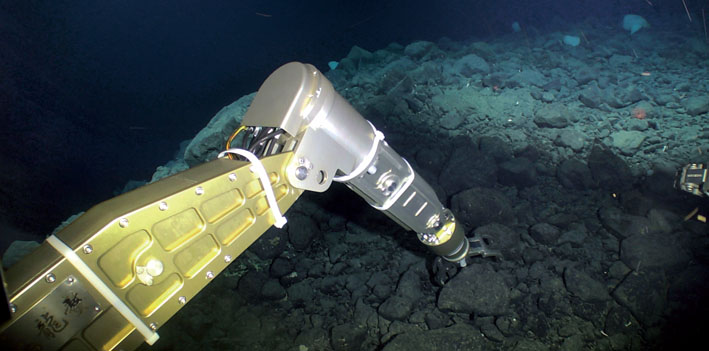While performing its maiden mission in a recent scientific survey in the West Pacific, a domestic ROV (remotely operated vehicle) system achieved a national record by diving 6,001 meters underwater.
Named SeaStar 6000, the system was produced by researchers from the CAS Shenyang Institute of Automation (SIA) in cooperation with their colleagues from the CAS Institute of Oceanography.
According to Prof. LI Zhigang, director of the Marine Robotics Department of SIA, over the past two and a half years researchers have overcome many technical challenges such as real-time monitoring and management of over-length armored cables, medium-frequency high-voltage power transfer of adaptive voltage compensation over a long distance, and precision hovering near the seabed.
During the 26-day survey, begun Oct.1, 2018, the SeaStar 6000 completed scientific tasks in cooperation with a deep-sea lander and a Raman spectrometer in a 1,100-meter dive. It also completed three 2,000-meter dives in succession, collecting a total of 400 kilograms of rock samples from the bottom of a West Pacific area, with the largest sample weighing 61 kilograms. In a three-hour 6,000-meter dive, SeaStar 6000 successfully performed a variety of scientific assignments including navigation and observations, biological research, and mud and water sample collection.
The development of SeaStar 6000 is supported by the Western Pacific Ocean System: Structure, Dynamics and Consequences (WPOS), a CAS pilot strategic program. Focused on the Western Pacific Ocean system and its adjacent seas, the program is to carry out a comprehensive and collaborative investigation and research from the perspective of ‘ocean system’, with the objective of developing a deep understanding on such research issues as the influence mechanism of the Indo-Pacific Warm Pool on the climate system of the East Asia and China, the evolution pattern of coastal ecosystems under the influence of the adjacent oceans, and the environment and the resources distribution of the Western Pacific deep sea. In addition, the program aims to promote the development and application of deep-sea research detection equipment.
A ROV is a tethered underwater mobile device. ROVs are common in deep-water industries such as offshore hydrocarbon extraction. They are also used extensively by the scientific community to study the ocean.
Since the late 1970s when the development of ROVs began in China, SIA has been a key player in the area. Over the years, SIA has created several firsts in the field of underwater robotics in China. Its current research and development are conducted in the following areas: rescue and recovery equipment, maritime survey, deep-water oil and gas engineering, marine scientific instruments, and other applications. Various kinds of marine equipment have been successfully developed, including remotely operated vehicles, autonomous underwater vehicles, autonomous & remotely operated underwater vehicles, and underwater manipulators. Most are maintained in running order and are quickly deployable.

SeaStar 6000 during application

SeaStar 6000 collecting rock samples from sea bottom

